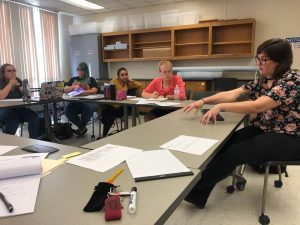User’s Guide
Elizabeth Kryder-Reid

Free and Open Access: All of the contributions to Toxic Heritage referenced in this text are freely available. Toxic Heritage is available on the Routledge website. Individual readings (chapters, case studies, visual essays) are linked in the “Toxic Heritage Book: Links to Readings” in the front matter. Each reading is linked to pdfs in the media folder and to e-text and downloadable pdfs on the Routledge site.
Flexibility: This open educational resources is designed to be a flexible resource for instructors, as well as educators and advocates in informal learning settings. The activities and discussion questions can be adapted for multiple levels of learners, scope and duration, and end products. For example, discussion questions can be used for in-class facilitated discussion or for essay prompts. Many activities can be simplified for a one-day in-class experience or developed into a more robust semester-long research project.
Adaptable to Local Contexts: Your setting may offer opportunities to enrich and deepen the learning experience. Activities can be linked to local resources (known sites of historic contamination, archival records, heritage organizations). It may be possible to partner with local and community-based experts who might share experiences of advocacy and resilience. There may also be organizations that can partner or collaborate on projects, such as helping to guide walking tours through neighborhoods, sharing experiences environmental impacts of pollution, or hosting student work in community spaces. Instructors may want to compile some basic research sources related to local sites for learners to work with, or, if the goal is building primary source research or field work skills, students may be instructed to work directly with repositories and/or community members. If the latter, students may require some supports such as orientation tour of the repository or introductions to archivists, experts, and community-based interlocutors.
Please note that instructors should consider human subjects research requirements at their institutions and go through IRB if required.
Format: Each activity includes:
- Associated readings
- Targeted Skills
- Directions
Some activities also include recommended formats and have multiple options.
The authors will do their best to maintain links, but if a resource is no longer available, instructors are encouraged to find appropriate substitutes.
Language: The majority of Teaching Toxic Heritage is in English, at least until we have the resources for translations. There are some materials in Spanish in Activity 4.4 Story Writing and Marine Plastics (see Garbology Workshop and exhibition text) contributed by Praet et al.
Feedback: If you have questions, concerns, or would like to contribute your own activities or discussion questions, please contact Elizabeth Kryder-Reid: ekryderr@iu.edu

